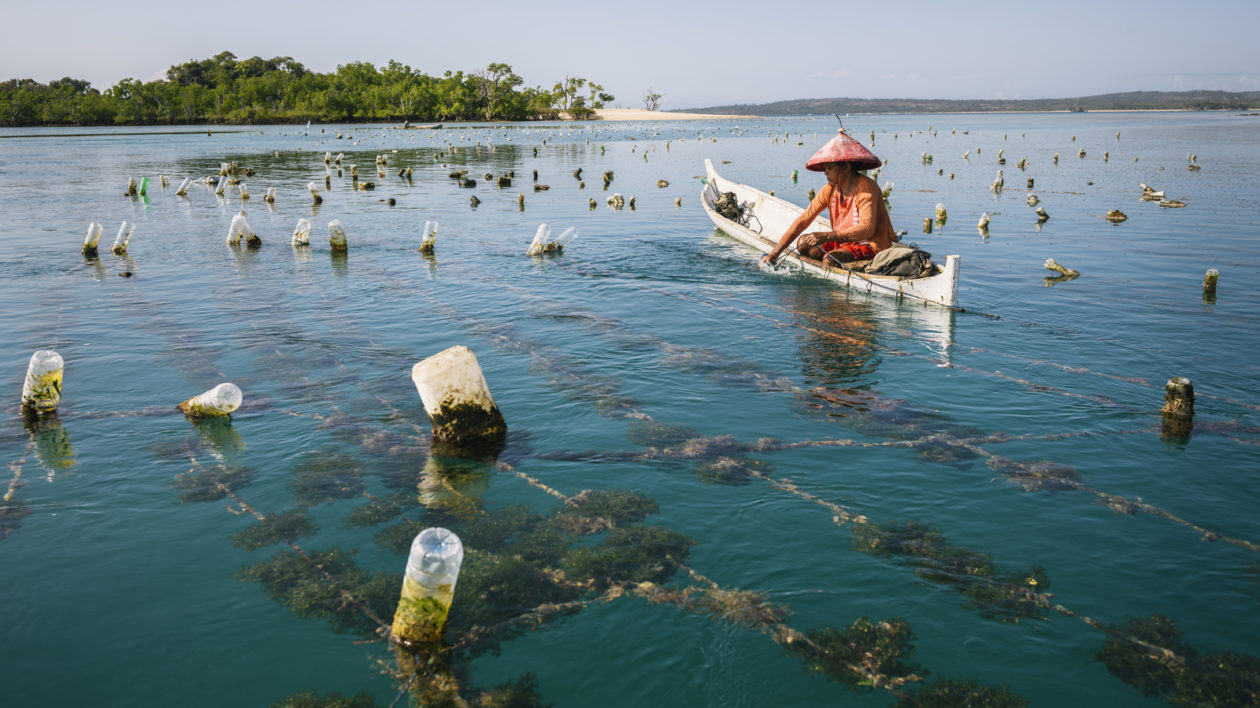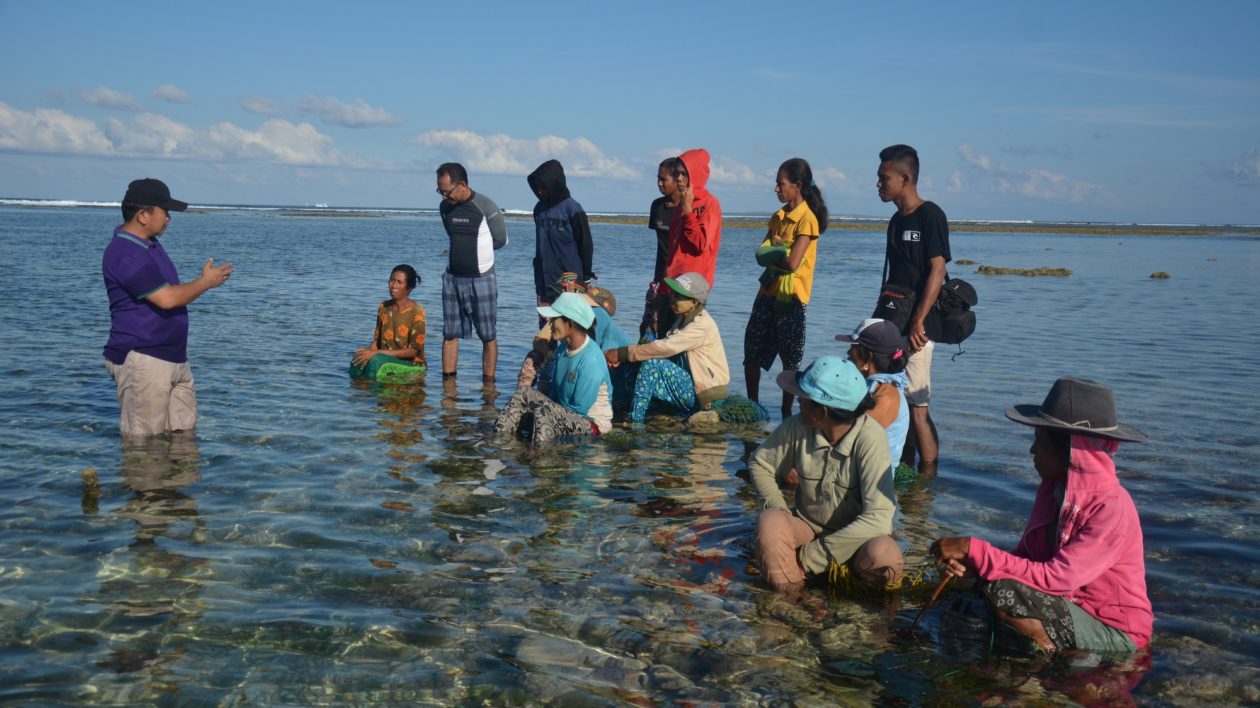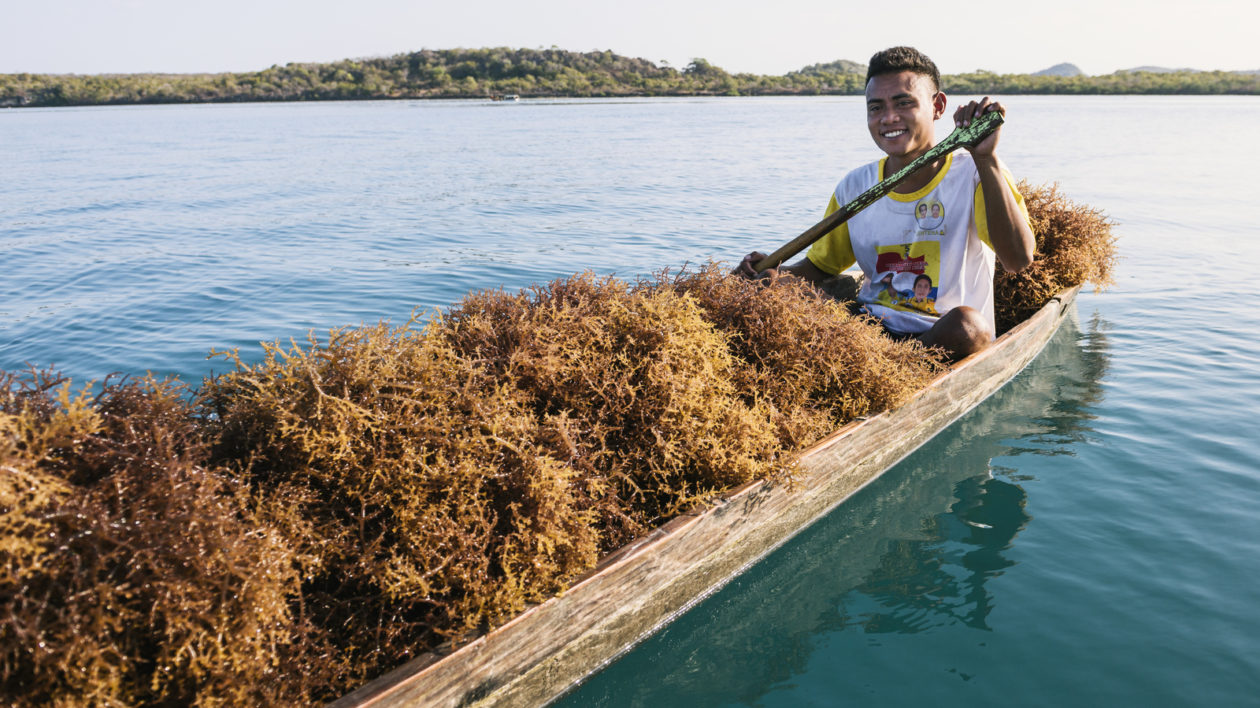What’s the first thing that comes to mind when you think of seaweed? Seeing it washed up on the shore? Sushi?
Perhaps if you grew up on the coast, you may have memories of chasing your sister down the beach with bullwhip kelp? No, just me? Well, okay.
How about… a sustainable livelihood for rural and indigenous women in Indonesia?
Seaweed is a massive and diverse industry worldwide, with farmed seaweed alone worth $11.7 billion annually. In addition to seaweed like nori and wakame that is gathered and raised for direct consumption, Eucheuma and Kappaphycus seaweeds are grown in tropical regions around the globe for use as a thickening agent for food and cosmetics, among other uses.
When you see carrageenan or agar as an ingredient in your ice cream or toothpaste? That’s seaweed. But where does it come from, who grows it, and why should the conservation community care about it?
The Nature Conservancy cares about seaweed farming because it’s an important industry globally for many women, rural populations, and indigenous people; and when it’s done in the right way, it can be a low-input farming system that can even have restorative effects on degraded habitats by reducing excess nutrients and providing habitat for other species.
Over the last three years, The Nature Conservancy has been working in communities in Indonesia and Belize on seaweed aquaculture as an alternative livelihood for overfishing, focusing on reducing environmental impacts, improving production, and creating sustainable livelihoods for coastal farmers.
Through this work, we determined the need for a guide for not only seaweed farmers, but seaweed purchasers and conservation organizations to provide a replicable structure that recognizes the needs of different communities and can be adapted for different geographies and markets.

Our three-part Indonesia Guide: Coastal Conservation and Sustainable Livelihoods through Seaweed Aquaculture in Indonesia provides information and recommendations for how seaweed buyers can increase the sustainability of their supply chains, conservation organizations can work within seaweed aquaculture for environmental and social gains, and farmers can improve their environmental and production practices.
We felt passionate about including a clear and explicit section of the guide on the approach and role of The Nature Conservancy in working in seaweed aquaculture – to be clear and transparent about the goals we’re advancing and work we’re undertaking.
We outline why The Nature Conservancy sees this industry as a gateway to conservation gains and social empowerment and how we believe that seaweed aquaculture can grow in harmony with marine conservation objectives while supporting sustainable livelihoods for coastal communities in Indonesia.
We discuss opportunities and challenges of seaweed farming and how our Indonesian team is using SIGAP, ‘Aksi Inspiratif Warga untuk Perubahan’ or Communities Inspiring Action for Change to overcome these challenges and invest in the opportunities.

This community development approach emphasizes that empowered communities should be built from the bottom up and that significant and meaningful development and conservation can take place when the communities are committed to investing in themselves.
Other parts of the Guide include information and recommendations for seaweed purchasers and seaweed farmers. For seaweed purchasers, the guide discusses how increasing the sustainability of supply chains is beneficial to buyers not only for obtaining sustainable eco-labels for market differentiation, but because poor practices, whether environmental, social, or economic, can undermine long-term business viability.
For seaweed farmers, we include an illustrated guide for more productive farming practices and decreasing impacts on the local environment that we will be using in concert with the on-the-ground trainings we have been providing.
As our work continues, we hope that this guide will evolve and serve as a living document to incorporate new information and approaches to increasing the sustainability of seaweed farming in Indonesia. We are developing a guide for our Belize seaweed work as well and see this three-part structure as replicable for different geographies, recognizing that different approaches to help work with and empower communities are needed for environmental, social, and economic sustainability.





Well done
Useful addition to guides to help communities grow
We have worked with indonesian colleagues in the sector since the 80s
Ill share your work with fishery institutes it may not have reached
Regards
Mik
sounds like an excellent goal for these folks